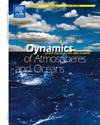喜马拉雅季风动态和未来预测:对海面温度、海平面压力关系和未来洪水风险的洞察
IF 2
4区 地球科学
Q2 GEOCHEMISTRY & GEOPHYSICS
引用次数: 0
摘要
喜马拉雅影响着南亚的印度夏季风(ISM)环流的基本特征。对ISM动力学的可靠预测需要更好地理解Niño地区El Niño-Southern涛动(ENSO) -海面温度(SST)和海平面压力(SLP)之间的关系。为了解决这一问题,我们利用Niño 4、3.4和3个地区的网格降水、ENSO-SST和SLP数据,对喀拉昆仑-喜马拉雅(KH)、西喜马拉雅(WH)、中喜马拉雅(CH)和东喜马拉雅(EH)季风的远距联系、相关性、制度转变、周期性和回归期进行了详细分析。此外,我们还研究了耦合模式比较项目第5阶段(CMIP5)考虑演变关系的预测。结果表明,西南、WH、EH和KH地区季风与Niño地区海温的空间相关性分别较强、中等、较弱和最弱。值得注意的是,Niño区域4和3.4的海温异常显示了1977年 ce的明显变化和1990年 着力点然而,Niño区域3和1 + 2没有表现出任何这样的变化。1977 - 2019年Niño 3.4和Niño 4海温距平 C.E.,和1990-2019 C.E.,分别为0.087°C和0.060°C,表明海面系统变暖。这种变暖趋势与CMIP5 RCP 4.5和RCP 8.5的预测进一步相关,这些预测表明,到2100年,由于高降水和极端降水,EH地区可能在季风月份经历严重的洪水。本文章由计算机程序翻译,如有差异,请以英文原文为准。
Monsoon dynamics and future projections in the Himalaya: Insights into sea surface temperature, sea level pressure relationships, and future flood risks
The Himalaya influences the fundamental features of the Indian Summer Monsoon (ISM) circulation across South Asia. Reliable predictions of ISM dynamics require an improved understanding of the relationship with the El Niño–Southern Oscillation (ENSO)–sea surface temperature (SST) and Sea Level Pressure (SLP) relationships in the Niño region. To address this, we conducted a detailed analysis of teleconnections, correlations, regime shifts, periodicity, and return periods of monsoons over the Karakoram Himalaya (KH), Western Himalaya (WH), Central Himalaya (CH), and Eastern Himalaya (EH) using gridded precipitation, ENSO-SST, and SLP data across the Niño 4, 3.4, and 3 regions. Additionally, we examined Coupled Model Intercomparison Project phase 5 (CMIP5) projections considering evolving relationships. The findings show that the monsoons over the CH, WH, EH, and KH have stronger, moderate, weaker, and weakest spatial correlations, respectively, with the SST of Niño regions. Notably, the SST anomalies for the Niño regions 4 and 3.4 reveal distinct regime shift for the years 1977 C.E. and 1990 C.E., however, Niño regions 3 and 1 + 2, do not exhibit any such shift. The SST anomalies for the Niño 3.4 and Niño 4 from 1977 to 2019 C.E., and 1990–2019 C.E., were 0.087°C and 0.060°C, respectively, indicating systematic warming of the sea surface. This warming trend is further linked to projections from CMIP5 RCP 4.5 and RCP 8.5, which suggest that the EH region may experience significant flooding during the monsoon months by 2100 due to high and extreme precipitation.
求助全文
通过发布文献求助,成功后即可免费获取论文全文。
去求助
来源期刊

Dynamics of Atmospheres and Oceans
地学-地球化学与地球物理
CiteScore
3.10
自引率
5.90%
发文量
43
审稿时长
>12 weeks
期刊介绍:
Dynamics of Atmospheres and Oceans is an international journal for research related to the dynamical and physical processes governing atmospheres, oceans and climate.
Authors are invited to submit articles, short contributions or scholarly reviews in the following areas:
•Dynamic meteorology
•Physical oceanography
•Geophysical fluid dynamics
•Climate variability and climate change
•Atmosphere-ocean-biosphere-cryosphere interactions
•Prediction and predictability
•Scale interactions
Papers of theoretical, computational, experimental and observational investigations are invited, particularly those that explore the fundamental nature - or bring together the interdisciplinary and multidisciplinary aspects - of dynamical and physical processes at all scales. Papers that explore air-sea interactions and the coupling between atmospheres, oceans, and other components of the climate system are particularly welcome.
 求助内容:
求助内容: 应助结果提醒方式:
应助结果提醒方式:


